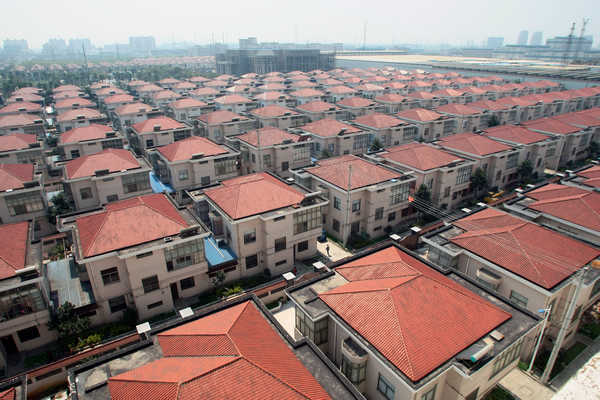Unlike Huaxi, Changjiang keeps low profile as it spreads the wealth
As China still marvels at a small oasis of prosperity and comfort created by its richest village of Huaxi, a powerful competitor has unintentionally stolen the limelight by giving each villager two 100-gram bars of gold and silver.
In mid-March, Changjiang, several hours by car northwest of Shanghai, fulfilled a promise made in 2009 to hand out the valuable metals, worth more than 40,000 yuan ($6,350), to each of its 2,858 permanent residents.
|
 |
|
Rows of villas line the street in Changjiang village, Jiangyin, East China's Jiangsu province. Weng Lei / for China Daily |
The gift, made in celebration of the 40th anniversary of the village-owned Jiangsu Xin Chang Jiang Group, drew enormous attention at a time when China's widening income gap and unfair wealth distribution increasingly cause social problems.
Recent polls by major Chinese news organizations showed that narrowing the income gap is seen as the highest priority topic that must be addressed by the country's leaders.
Yet Changjiang, a 6.5-square-kilometer village not far from the urban center of Jiangyin, seemed untouched by the problem and to be moving toward a utopia where residents share in the common prosperity.
Apart from the gift of gold and silver, residents said they have enjoyed a long list of benefits, including subsidized villas that were sold for 68,000 and 198,000 yuan starting in 2000.
"How is that different from a free handout?" asked Zhang Rongxian, a resident, showing the strikingly similar two-story villas with spacious courtyards.
Other benefits have included occasional handouts of cash, shares in village companies and annual dividends, as well as a quota of free water, electricity, gas and food coupons every month.
But unlike the high profile Huaxi, which also falls under the jurisdiction of Jiangyin in Jiangsu province, village heads stay low-profile about the riches of Changjiang and have turned down almost all interview requests since the village was catapulted to fame when it issued two 100-gram bars of gold and silver to every household (rather than each person) in a preliminary celebration in 2010.
In a 2010 interview, Li Huixia, a public relations official with the Xin Chang Jiang Group, said the gold and silver were given to residents as tangible benefits of the village's prosperity and the value of the metals would appreciate every year, making them even happier.
Due to its low profile, the village sees hardly any tourists on a typical day. It is a modern area where industrial plants and modern dwellings have long replaced farmland, unlike the common notion of what a Chinese village should look like.
In its southern parts stands a gigantic stone gate with five gilded Chinese characters that read "Changjiang Village of China", easily visible from a distance. A major boulevard, flanked by 818 villas in neat rows, divides the village in two.
Utility companies and steel, pipe and ship recycling factories are among the enterprises in the north and far east and west of the village, which is green with plants.
The hospitality common in rural homes is not obvious in Changjiang, where each household locks itself behind bronze gates forged by the village as another gift to residents.
The people go to the village's central park after dusk, said two women from a nearby village.
Busy taking care of their children, they are the only visitors in the morning to the park that has luxury facilities such as tennis courts.
